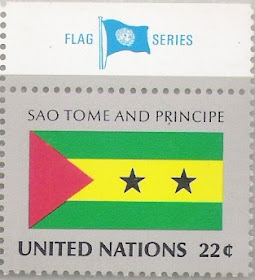Palestine
Fida'I (Revolutionist) is the “Anthem of the Palestinian revolution". It
was adopted in 1996. Written by Said Al
Muzayin (Aka Fata Al Thawra), and its music was composed by Egyptian maestro
Ali Ismael. The song commences with
the words: Biladi Biladi (My
country, my country) and the last stanza goes with:
“By the oath under the shade of the
flag
By my land and nation, and the fire of pain
I will live as a Revolutionist*, I will remain a Revolutionist,
I will end as a Revolutionist - until my country returns”.
Philippines

The Philippine National Anthem lyrics has three versions- "Lupang
Hinirang" in Tagalog language (1948) penned by F
The anthem music was composed by Julian Felipe in 1898.
The stamps above features Julian Felipe, the anthem composer, with Jose Palma.
The anthem in Spanish version "Filipinas" was written by Jose Palma in 1899,

"Philippine Hymn" the anthem in English
version (1938) was written by Camilo
Osias.
Presently, only the anthem in Tagalog version is used throughout Philippines.
The first and second verses and the chorus of the Lupang Hinirang allude to the light of the sun and stars in the flag;
the fourth verse states “Thy banner, dear to all our hearts, its sun
and stars alight, O never shall its shinning field be dimmed by Tyrant’s
might”.
Portugal
A Portuguesa is the national anthem of Portugal. Composed by Alfredo Keil and written by Henrique Lopes de Mendonca during the resurgent nationalist movement ignited by the 1890British ultimatum to Portugal concerning its African colonies. It was adopted as the national anthem of the newborn Portiguse Republic in 1911, replacing O Hino da Carta the anthem of the deposed monarchy.

Portugal celebrated the 100th
anniversary of the first performance of its national anthem in 1990.

The anthem proclaims;
“Unfurl the unconquering flag in the bright light of your sky! Cry out to all Europe and the whole world that Portugal has not perished”.
Envelope with the score of Porumbescu's "Trei Culori" (in
use-1977-1990) issued in 1977.
By my land and nation, and the fire of pain
I will live as a Revolutionist*, I will remain a Revolutionist,
I will end as a Revolutionist - until my country returns”.

The anthem music was composed by Julian Felipe in 1898.


Presently, only the anthem in Tagalog version is used throughout Philippines.
A Portuguesa is the national anthem of Portugal. Composed by Alfredo Keil and written by Henrique Lopes de Mendonca during the resurgent nationalist movement ignited by the 1890British ultimatum to Portugal concerning its African colonies. It was adopted as the national anthem of the newborn Portiguse Republic in 1911, replacing O Hino da Carta the anthem of the deposed monarchy.


“Unfurl the unconquering flag in the bright light of your sky! Cry out to all Europe and the whole world that Portugal has not perished”.
Romania
Trei culori
(Three colours) was the national anthem of Romania from 1977 until
1989. Since the anti-communist Revolution of 1989 it has been replaced
by Deşteaptă-te, Române!
(1989-present). Trei culori
was written by Ciprian Porumbescu, as the name suggests the anthem had a direct reference to the Romanian tricoloured
national flag.
The song had the following wordings (variously translated);
Three colours I know in the world
And I hold them like a holy jewel
They are colours with an ancient
fame
Reminders of a brave nation.
As long as in the sky and in the
world
There will be these three colours
We'll have a glorious name
And a glorious future.
Red is the bravery's fire
Sacrifices that won't ever be lost
Yellow, the plain's gold
And blue is our sky.
“Independência Total” is the national anthem of São Tomé and Príncipe. The anthem, adopted in 1975, was written by Alda Neves da Graça do Espírito Santo and composed by Manuel dos Santos Barreto de Sousa e Almeida.
Raising the national flag.
Voice of the people, present, present and united.
Saudi Arabia
The “Al- Salaam al-Mamlaki al- Saud”, the Royal Salute of Saudi Arabia was adopted in 1950 and then again in 1984 with a change in lyrics. The original lyrics (1950) were written by Mohammed Talat while the new lyrics (1984) were written by Ibrahim Khafaji.

Glorify the Creator of the heavens
And raise the green, fluttering flag,
Carrying the emblem of Light!
Repeat - God is greatest!
O my country,
My country, may you always live,
The glory of all Muslims!
Long live the King,
For the flag and the country!”




























